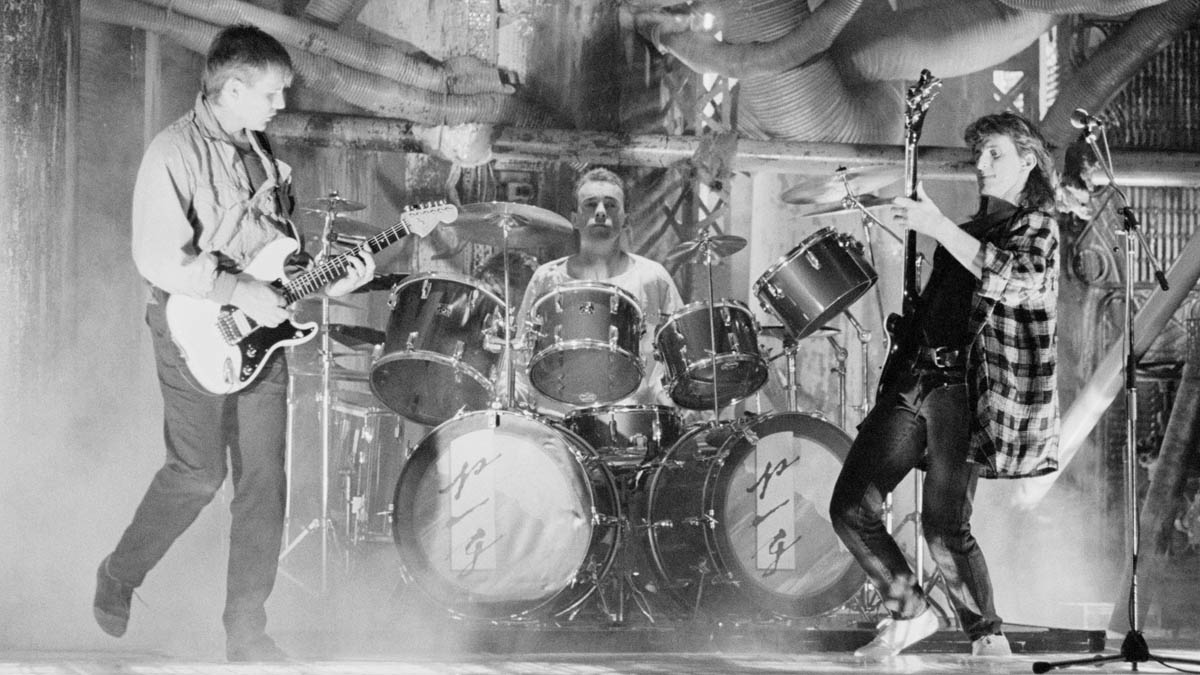
1984 saw Rush release their 10th studio album in as many years. But while the trio – guitarist Alex Lifeson, bassist, keyboardist, and singer Geddy Lee and drummer and lyricist Neil Peart – were firmly established as rock superstars, they were also in some ways operating as a newborn act, exploring uncharted, sometimes uneasy, rock territory.
Following the massive mainstream success of 1981’s Moving Pictures, which spawned now-classic singles like Limelight, Freewill, and Tom Sawyer, the band took a hard turn on the next year’s Signals, which pushed synthesizers to the forefront, relegating Lifeson’s guitar to a less central and more supportive role.
“Signals was a weird record for me – I liked the songs, but I thought it was a little weak in tonality,” Lifeson tells Guitar World. “Keyboards started coming up a lot more and so there was a little more of a fight for space with the guitar, which would continue with some of the following records.” The band’s next album, Grace Under Pressure, “was kind of a response to Signals,” Lifeson says, “and it became more of a guitar record.”
Indeed, while Grace Under Pressure, released April 12, 1984, still sounds closer to the synthy, heavily processed sound of Signals than the rock anthems of Moving Pictures, Lifeson’s guitar is more present throughout, spiking the tracks with driving riffs and slashing chord work, and infusing songs like Afterimage, Between the Wheels, and The Body Electric with characteristic hot-wired solos. “I think The Body Electric is my favorite song from the record,” Lifeson says. “I really liked the solo on that one.”
Gear-wise, Lifeson employed a combination of Marshall and Carvin amps in the studio, and relied heavily on a Loft digital delay unit and a DeltaLab HarmoniComputer harmonizer (which you can hear on Distant Early Warning and Red Sector A), among other effects.
His main guitars for the sessions, which took place at Le Studio in Quebec, were his white Hentor Sportscaster, as well as another Strat similarly modified with a humbucker in the bridge position, along with his trusty Gibson ES-355.
“I liked the combination of the 355 double-tracking with a Tele or a Strat – something a little wiry, with a different character,” he says. “That was sort of my go-to.”
Despite the high quality of the songs and performances, Lifeson concedes that Grace Under Pressure was a “really hard” record to make. “We started working on it with [producer] Steve Lillywhite,” he says. “We approached him on the previous tour and we agreed to work together on Grace Under Pressure. But then literally last minute we got a call from his management and they said, ‘Steve’s taken another project. He won’t be doing your project.’ That really left us in a lurch.”
In a pinch, the band went searching for a new producer and landed on Peter Henderson, who had worked with Jeff Beck, Paul McCartney and Wings, Supertramp, and others.
Peter had a good track record, but while he was qualified, he just didn’t seem to be focused
“Peter had a good track record, but while he was qualified, he just didn’t seem to be focused,” Lifeson says. “That left it up to the three of us to really focus on production. We like to work with a producer that’s sort of like the fourth wheel, where we do what we do and they add just a little bit of direction and deal with some of the stuff we don’t want to deal with. That way we can focus directly on the music.
“But that wasn’t quite the case. I remember we were at Le Studio and it was a very, very cold winter. The record took a long time to make and it was really, really difficult.”
That said, he adds, “When it was all said and done we were quite proud of it. I like the tone of the record. I like the songs on that record. I think that it was a progression from the previous records, and that’s what we always wanted to achieve.”
Throughout Rush’s decades together, Lifeson continues, “We always wanted to move forward. With Grace Under Pressure we certainly did.”







